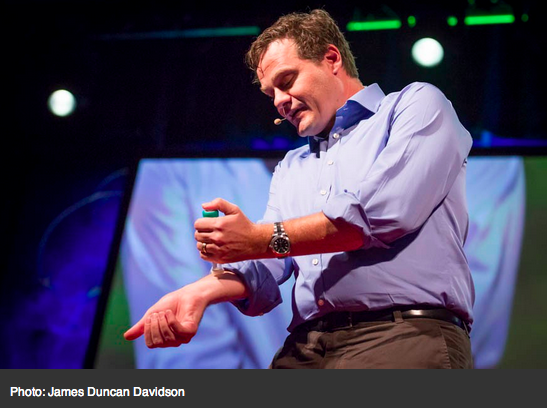Painless vaccinations? Really?
Yes! Queensland University biomedical engineer Mark Kendall is developing a Nanopatch vaccine that will be delivered via a patch the size of a postage stamp placed on the skin.
Mark Kendall is Chief Technical Officer and Director at Vaxxas, a venture capital funded technology start-up company focused on enhancing the performance of existing and next generation vaccines through the development and commercialization of the Nanopatch.
Painless vaccinations? Really?
Yes! Queensland University biomedical engineer Mark Kendall is developing a Nanopatch vaccine that will be delivered via a patch the size of a postage stamp placed on the skin.
Mark Kendall is Chief Technical Officer and Director at Vaxxas, a venture capital funded technology start-up company focused on enhancing the performance of existing and next generation vaccines through the development and commercialization of the Nanopatch.
Besides the obvious benefit of painless delivery, the Nanopatch would mean that the vaccine is stored in dry form and could withstand soaring temperatures. No risk of health workers being stuck with needles, no need for sterile disposable needles at all.
Most immune cells are just under the skin, not in the muscle where traditional vaccines are delivered via intra-muscular injection. The Nanopatch delivers the vaccine directly to the immune cells under the skin. Since it reaches these cells faster than the traditional approach, lower doses of the vaccine are effective, reducing production costs significantly.
During a BBC interview, Kendall explained,
“The projections on the Nanopatch work with the skin’s immune system. We target these cells that reside just a hair’s breadth from the surface of the skin. It seems that we may have been missing the immune sweet spot which may be in the skin rather than the muscle which is where traditional needles go. A vaccine that had cost $10 can be brought down to just 10 cents, which is very important in the developing world”.

Mark Kendall presented the technology at the recent TEDGlobal2013 in Edinburg, Scotland and told the audience there that the Nanopatch is beginning a pilot test in Papua, New Guinea. The nation has the highest rate of HPV and yet there are only 800 refrigerators to keep vaccines cold. The Nanopatch could really help under those conditions.
“Half of the vaccines in Africa are not working properly because refrigeration has failed at some point in the chain,” says Dr Kendall. When he told the TED audience that the vaccine on the Nanopatch could maintain its strength even when kept at 73 degrees Farenheit for up to a year, the audience applauded.
The patch is about one centimeter by one centimeter, so it is not small. But the projections on it are microscopic and are coated with a dry version of the vaccine. As you push the patch onto the skin, the projections push through the outer skin layer, become wet and reach down onto the immune cells where we want the vaccine to go.
Listen to this video as Dr Mark Kendall explains the Nanopatch:
Sources:
http://www.vaxxas.com/about-vaxxas
http://www.wired.co.uk/news/archive/2013-06/13/nanopatch-vaccine
http://blog.ted.com/2013/06/12/vaccines-via-a-patch-mark-kendall-at-tedglobal-2013/
http://www.bbc.co.uk/news/technology-22882446
http://www.radioaustralia.net.au/international/radio/onairhighlights/nanopatch-nopain-vaccination-gets-a-boost
http://www.reuters.com/article/2013/01/10/us-vaccines-nanopatch-idUSBRE9090GG20130110